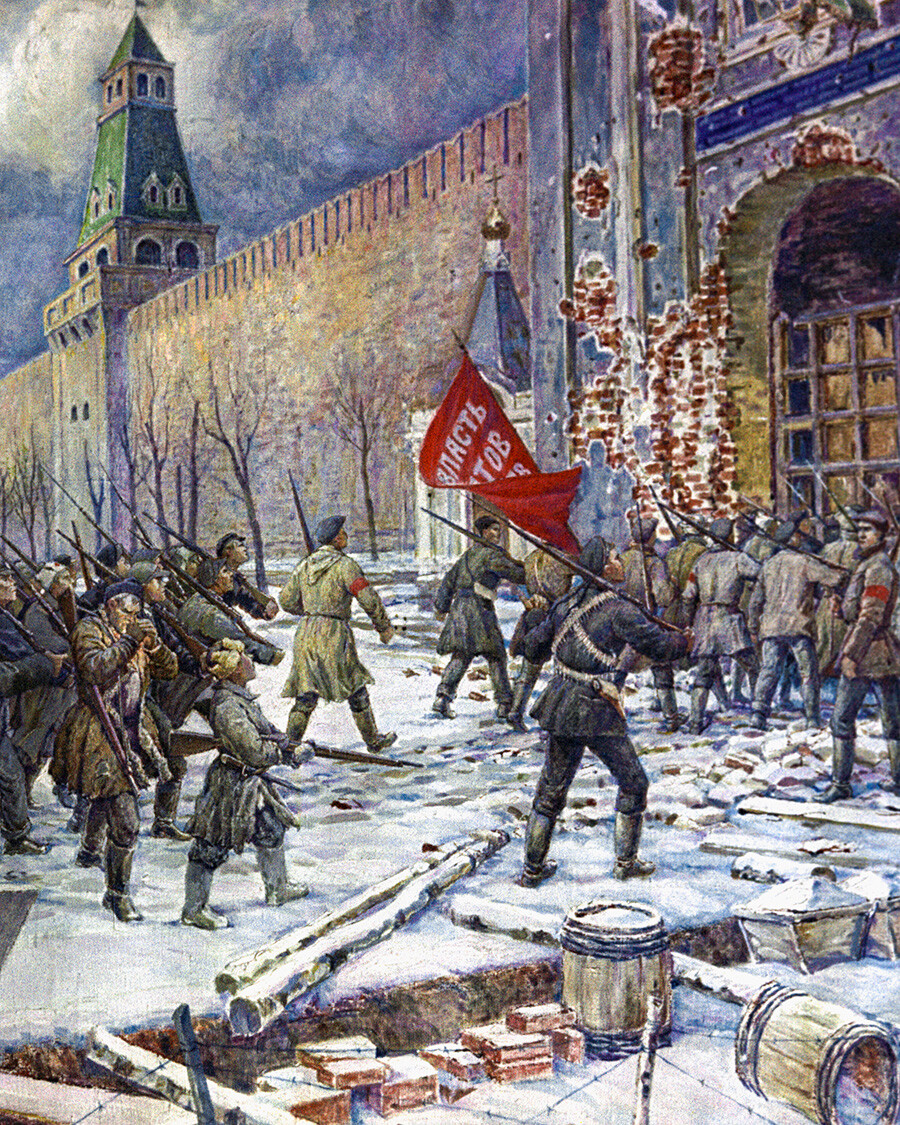How Bolsheviks bombed the Kremlin
 Ernst Lissner. 'The Red Guard Entering the Kremlin' (Reproduction)
Ernst Lissner. 'The Red Guard Entering the Kremlin' (Reproduction)
After news of the Bolshevik coup in Petrograd (now St. Petersburg), the Moscow revolutionaries also decided to act and armed more than 10,000 red volunteer soldiers. But the Bolshevik position in Moscow was not so strong – thousands of officers, cadets and students opposed them building barricades and digging trenches right in the central streets.
For a whole week the Bolsheviks tried to seize power in Moscow. Fierce battles were fought in the city, the revolutionaries took by storm the Metropol Hotel opposite the Bolshoi Theater, where a bandaging station of their opponents was organized.
Cadepts held defenses in the Kremlin to prevent the Bolsheviks from reaching the local arsenal. They didn’t agree to a truce or surrender and had to repel massive artillery bombardments.
During two days, Lenin’s supporters indiscriminately bombed the main symbol of Moscow. As a result, most of the Kremlin buildings, including the main cathedrals, were damaged. The Small Nikolaevsky Palace, where the headquarters of cadets was located, got the most serious harm.
 The Small Nikolaevsky Palace after the Kremlin shooting, 1917
The Small Nikolaevsky Palace after the Kremlin shooting, 1917
Many ancient icons, unique tiles, as well as furniture and valuables from the royal chambers were destroyed under the bombardment. The Spasskaya Tower with the clock was badly damaged, and the gate icon on the Nikolskaya Tower was destroyed.
 Nikolsky Tower of the Kremlin with a destroyed gateway icon of St. Nicholas
Nikolsky Tower of the Kremlin with a destroyed gateway icon of St. Nicholas
The Bolshevik People’s Commissar (minister) of Education, Anatoly Lunacharsky, was truly shocked by the fighting and the destruction of cultural property. “There are thousands of victims,” he wrote. “The Kremlin, where all the most important artistic treasures of Petrograd and Moscow are now gathered, is being bombarded [...]. I cannot bear it,” read his resignation letter.
But the revolutionary leader, Vladimir Lenin, was not so sentimental and reconvinced Lunacharsky. As the People’s Commissar himself recalled, Lenin answered him: “How can you attach such importance to this or that building, no matter how good it is, when it comes to opening the doors to such a social order, which is capable of creating a beauty immeasurably superior to anything that could only be dreamed of in the past?”.
 Revolutionary events of 1917 in Moscow. A barricade in the arches of the Voskresensky Gate of the Kitay-gorod Wall
Revolutionary events of 1917 in Moscow. A barricade in the arches of the Voskresensky Gate of the Kitay-gorod Wall
On November 3, the “white” guard laid down their arms and left the Kremlin. At the same time, the first graves appeared near the Kremlin walls – the Bolsheviks buried about 200 Red Army soldiers who died during the storming. The losses of the White Guards were comparable – their number was about 300 people. All of them were buried in a mass grave in the north of Moscow. The coffins with their bodies were accompanied to the cemetery by a procession of thousands.

